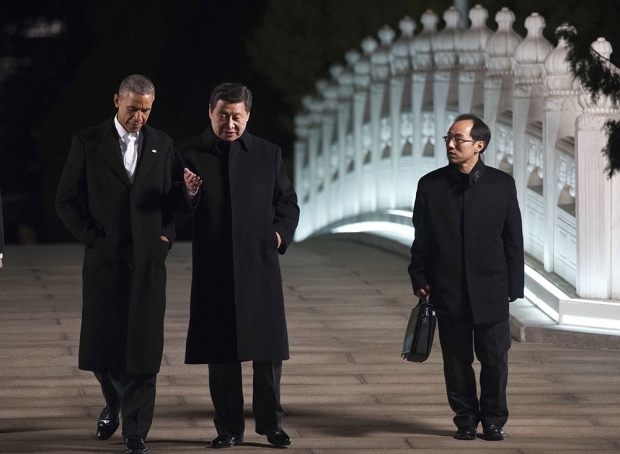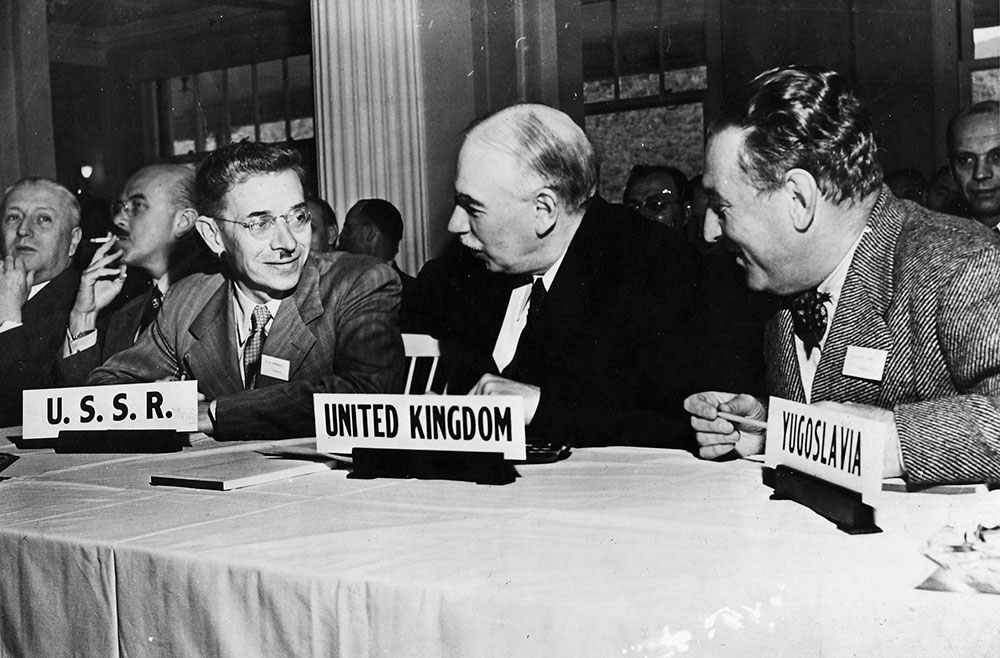International cooperation is in decline both in the political and financial spheres. The U.N. has failed to address any of the major conflicts since the end of the cold war; the 2009 Copenhagen Climate Change Conference left a sour aftertaste; the World Trade Organization hasn’t concluded a major trade round since 1994. The International Monetary Fund’s legitimacy is increasingly questioned because of its outdated governance, and the G20, which emerged during the financial crisis of 2008 as a potentially powerful instrument of international cooperation, seems to have lost its way. In all areas, national, sectarian, business, and other special interests take precedence over the common interest. This trend has now reached a point where instead of a global order we have to speak of global disorder.
In the political sphere local conflicts fester and multiply. Taken individually these conflicts could possibly be solved but they tend to be interconnected and the losers in one conflict tend to become the spoilers in others. For instance, the Syrian crisis deteriorated when Putin’s Russia and the Iranian government came to Bashar al-Assad’s rescue, each for its own reasons. Saudi Arabia provided the seed money for ISIS and Iran instigated the Houthi rebellion in Yemen to retaliate against Saudi Arabia. Bibi Netanyahu tried to turn the U.S. Congress against the nuclear treaty the U.S. was negotiating with Iran. There are just too many conflicts for international public opinion to exert a positive influence.
In the financial sphere the Bretton Woods institutions—the IMF and the World Bank—have lost their monopoly position. Under Chinese leadership, a parallel set of institutions is emerging. Will they be in conflict or will they find a way to cooperate? Since the financial and the political spheres are also interconnected, the future course of history will greatly depend on how China tackles its economic transition from investment and export-led growth to greater dependence on domestic demand, and how the U.S. reacts to it. A strategic partnership between the U.S. and China could prevent the evolution of two power blocks that may be drawn into military conflict.
How did we reach this point of global disorder? During the cold war the world was dominated by two superpowers. Each maintained some degree of control over its allies and satellites, and avoided direct military confrontation with the other because of the danger of Mutually Assured Destruction. It was a MAD system but it worked: it produced a number of local military conflicts but it avoided a world war.
When the Soviet empire fell apart the United States had an opportunity to become the sole superpower and the guarantor of peace in the world, but it did not rise to the occasion. The U.S. was founded on the principle of individual freedom and it was not predisposed to become the policeman of the world. Indeed, it did not have a coherent view of the meaning of leadership in international affairs. During the cold war it had a bipartisan foreign policy, on which Democrats and Republicans largely agreed; but after the cold war ended the partnership broke up. Both parties continued to emphasize American sovereignty but they rarely agreed on subordinating it to international obligations.
Then in 1997, a group of neoconservatives argued that the U.S. should use its military supremacy to impose its national interests, and established a think tank called the Project for the New American Century, “to promote American global leadership.” But that was a false approach: military force cannot be used to rule the world. After the terrorist attack of September 11, the neocons persuaded President George W. Bush to attack Iraq on dubious grounds that turned out to be false, and the U.S. lost its supremacy. The Project for the New American Century had approximately the same lifespan as Hitler’s Thousand-Year Reich: around ten years.
On the financial side, by contrast, there was a clear consensus—the so-called Washington Consensus—on America’s role in the world. It became dominant in the 1980s under the leadership of Ronald Reagan and Margaret Thatcher. It had strong ideological support from market fundamentalists; it had a supposedly scientific foundation in the Efficient Market Hypothesis and Rational Choice Theory; and it was efficiently administered by the International Monetary Fund (IMF). The consensus was a much more subtle compromise between international governance and national self-interest than the neocons’ view that military power is supreme.
Indeed, the Washington Consensus had its roots in the original compromise on which the Bretton Woods institutions were founded. John Maynard Keynes proposed a truly international currency, the bancor, but the U.S. insisted on the dollar as the world’s reserve currency and it prevailed. In the memorable words of George Orwell’s Animal Farm, “all animals are equal, but some animals are more equal than others.” The Washington Consensus promoted free trade and the globalization of financial markets. In the late 1990s, market fundamentalists even tried to modify the articles of agreement of the IMF so as to impose capital account convertibility, the free exchange of currencies. That attempt failed, but by allowing financial capital to move around freely the Washington Consensus also allowed capital to escape taxation and regulation. That was a triumph for market fundamentalism.
Unfortunately, the scientific foundations of this approach proved to be ill conceived. Unregulated financial markets are inherently unstable: instead of a general equilibrium that assures the optimum allocation of resources, they produce financial crises. This was dramatically demonstrated by the crash of 2008. By coincidence, 2008 marked both the end of America’s political supremacy and the demise of the Washington Consensus. It was also the beginning of a process of financial and political disintegration that first manifested itself in the microcosm of the European Union, but then spread to the world at large.
The crash of 2008 had a lasting negative effect on all the economies of the world, with the notable exception of China’s. The Chinese banking system was relatively isolated from the rest of the world and largely government-owned. As a consequence, the Chinese banks could, at the government’s behest, offset the collapse of external demand by flooding the economy with credit. The Chinese economy replaced the American consumer as the motor of the global economy, largely by selling to the American consumer on credit. It has been a rather weak motor, reflecting the relative size of the Chinese and American economies, so that the global economy has grown rather slowly since the emergence of China’s international economic power.
The main reason why the world avoided a global depression is that economists have learned some lessons from the experience of the 1930s. The heavy load of debt and lingering political prejudices limited the scale of fiscal stimulus globally (again with the exception of China); but the Federal Reserve under the leadership of its chairman, Ben Bernanke, embarked on unorthodox monetary policies including quantitative easing—large-scale injection of money into the economy through the purchase of bonds by the Federal Reserve. This prevented the reduction in effective demand from deteriorating into a global depression.
The crash of 2008 was also indirectly responsible for the euro crisis. The euro was an incomplete currency: it had a common central bank but it did not have a common treasury. The architects of the euro were aware of this defect but believed that when the deficiency became apparent the political will could be summoned to correct it. After all, that is how the European Union was brought into existence—taking one step at a time, knowing full well that it was insufficient but that when the need arose it would lead to further steps.
Unfortunately, political conditions changed between 1999, when the euro was adopted, and 2008, when the need arose. Germany under the leadership of Helmut Kohl led the process of European integration in order to facilitate the reunification of Germany. But reunification proved expensive and the German public became unwilling to take on any additional expenses. When, after the bankruptcy of Lehman Brothers in 2008, the European finance ministers declared that no systemically important financial institution would be allowed to fail, Chancellor Angela Merkel, as a politician in touch with the prevailing public opinion, insisted that the responsibility should fall on each country separately, not on the European Union collectively. That ruled out the possibility of a common treasury just when it was needed. That was the beginning of the euro crisis. Crises in individual countries like Greece, Italy, or Ireland are essentially variants of the euro crisis.
Subsequently, the financial crisis has morphed into a series of political crises. The differences between creditor countries and debtor countries have transformed the European Union from a voluntary association of equals into a relationship between creditors, such as Germany, and debtors, such as Greece, that is neither voluntary nor equal and arouses increasing political tensions.
The European Union started out as a valiant attempt at international governance on a regional scale. In the aftermath of 2008, the E.U. became preoccupied with its internal problems and failed to pull its weight in the international economy. The United States also became inward-looking but by a somewhat different route. The inward turn of the E.U. and U.S. led to a decline in international cooperation on a global scale.
Since the Western powers are the mainstay of the prevailing world order, their declining influence has created a power vacuum in international governance. Aspiring regional powers and nonstate actors, which are willing to use military force, have rushed to fill the vacuum. Armed conflicts have proliferated and spread from the Middle East to other parts of Asia, Africa, and even Europe.
Conversation
02.27.15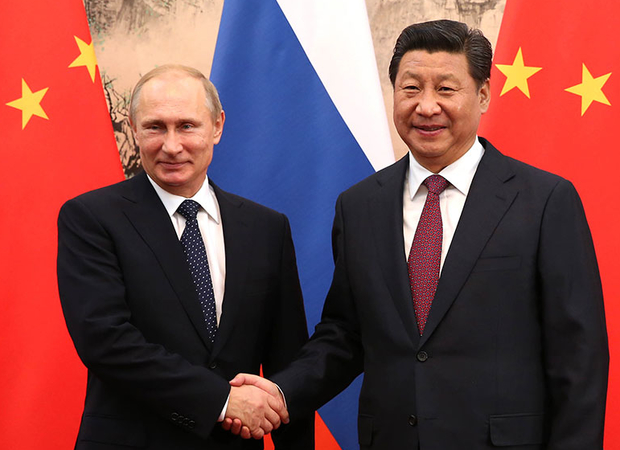
Are China and Russia Forging a New Ideological Bloc?
By annexing Crimea and establishing separatist enclaves in Ukraine, Putin’s Russia has challenged both the prevailing world order, which depends on the Western powers for support, and the values and principles on which the E.U. was founded. Neither the European nor the American public is fully aware of the severity of the challenge. President Vladimir Putin wants to destabilize all of Ukraine by precipitating a financial and political collapse for which he can disclaim responsibility, while avoiding occupation of a part of eastern Ukraine, which would then depend on Russia for economic support. He has demonstrated his preference by twice converting an assured military victory into a cease-fire that threatened to destabilize all of Ukraine. Unfortunately, Putin is succeeding, as can be seen by comparing the “Minsk Two” cease-fire with “Minsk One,” even if his success is purely temporary. Putin now seeks to use Ukraine to sow dissension and gain political influence within the European Union.
The severity of the Russian threat is directly correlated with the weakness of the European Union. The E.U. has excelled at muddling through financial and political crises but now it is confronted with not one but five crises: Russia, Ukraine, Greece, immigration, and the coming British referendum on E.U. membership—and that may be too much. The very survival of the E.U. is at risk.
International governance on a global scale is equally fragile. The world may break up into rival camps both financially and politically. China has begun to build a parallel set of financial institutions, including the Asian Infrastructure Investment Bank (AIIB); the Asian Bond Fund Initiative; the New Development Bank (formerly the BRICS Bank); and the Chiang Mai Initiative, which is an Asian regional multilateral arrangement to swap currencies. Whether the two camps will be able to keep their rivalry within bounds will depend on how China manages its economic transition and on how the U.S. reacts to it.
Conversation
03.24.15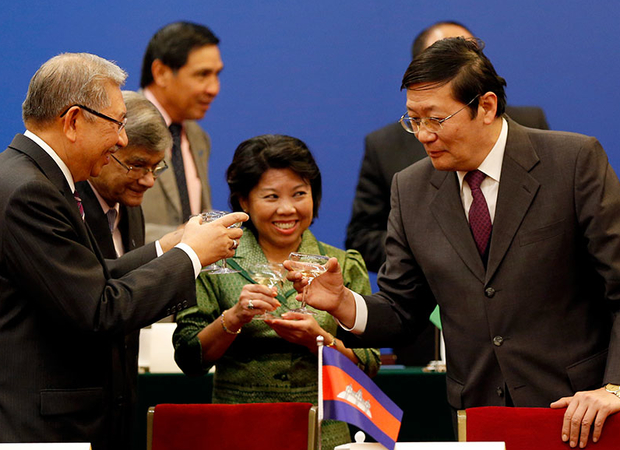
What Went Wrong With U.S. Strategy on China’s New Bank and What Should Washington Do Now?
The International Monetary Fund could play a positive part in this. It has abandoned its commitment to the Washington Consensus but the controlling shareholders of the Bretton Woods institutions—the U.S., the U.K., France, and Germany among them—are unwilling to relinquish their voting control by increasing the representation of the developing world. This is very shortsighted on their part because it does not recognize changes in the relative weight of various economies and particularly the rise of China.
The controlling shareholders are unlikely to abandon their control, however tenuous; but the IMF has an opportunity to build a binding connection between the two camps. The opportunity arises from the fact that the composition of the IMF’s Special Drawing Rights (SDR) basket will be up for its five-yearly review at the end of 2015.
The SDR is an international reserve asset, created by the IMF in 1969 to supplement the existing official reserves of member countries. The Chinese renminbi is not fully qualified to be included in the SDR basket, but the qualifications to be included are not as rigorously defined as is generally believed. The Japanese yen was introduced when it was not yet widely traded; the franc entered the basket when the French capital account was heavily controlled; and the Saudi riyal was introduced when it was completely pegged to the U.S. currency. The criteria for inclusion have changed over the years but now call for (1) a large exporter country and (2) a “freely usable” currency. This term is often misconstrued as imposing complete convertibility of capital accounts and flexibility of exchange rates; but that is not the case. Indeed, the basket of Special Drawing Rights formerly included currencies with no or little capital account convertibility.
The Chinese leadership has now embarked on a major effort to have the renminbi included in the SDR basket, and the IMF staff is sympathetic. For instance, it has announced that the renminbi is “no longer undervalued,” and it doesn’t seek full and precipitous capital account liberalization, but rather a cautious and gradual pace of reform in order to ensure the smooth functioning of the SDR and the preservation of financial stability in China.
Much now depends on the attitude of the U.S. government, which holds veto rights in the IMF—even if the decision regarding the SDR basket requires only a 70 percent majority of the IMF’s board. The U.S. would be making a major concession if it opened the door to allowing the renminbi to become a potential rival to the dollar. It could demand similar concessions from China in return, but that would be the wrong approach. The relationship between two great powers is not a zero-sum game: one party’s gain is not necessarily a loss for the other.
China is seeking SDR status for the renminbi not to please or hurt the U.S. but for reasons of its own that are only indirectly connected with China’s ultimate ambition of replacing the U.S. dollar as the dominant currency in the world. China seeks to use financial liberalization as an engine of growth for the Chinese economy. China wants to deepen the government bond market and open it up to international investors in order to enable the central government to clean up the bad debts of insolvent local authorities; it also wants to reduce the excessive leverage in the economy by promoting conversions of debt to equity. Inclusion of the renminbi in the IMF basket would facilitate the process, and success would automatically advance the renminbi’s weight and influence in the world.
Two Way Street
05.12.15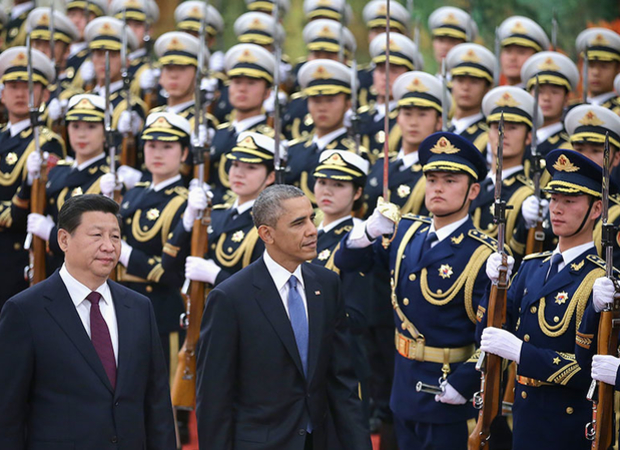
We Need to Stay Coolheaded
from Two Way StreetThe U.S. government has little to gain and much to lose by treating the relationship with China as a zero-sum game. In other words it has little bargaining power. It could, of course, obstruct China’s progress, but that would be very dangerous. President Xi Jinping has taken personal responsibility for the economy and national security. If his market-oriented reforms fail, he may foster some external conflicts to keep the country united and maintain himself in power. This could lead China to align itself with Russia not only financially but also politically and militarily. In that case, should the external conflict escalate into a military confrontation with an ally of the United States such as Japan, it is not an exaggeration to say that we would be on the threshold of a third world war.
Indeed, military budgets are rapidly increasing both in Russia and in China, and they remain at a very high level in the United States. For China, rearmament would be a surefire way to boost domestic demand. China is already flexing its military muscle in the South China Sea, operating in a unilateral and often quite belligerent manner, which is causing justifiable concern in Washington. Nevertheless, it may take a decade or more until a Russian–Chinese military alliance would be ready to confront the U.S. directly. Until then, we may expect a continuation of hybrid warfare and the proliferation of proxy wars.
Both the U.S. and China have a vital interest in reaching an understanding because the alternative is so unpalatable. The benefits of an eventual agreement between China and the U.S. could be equally far-reaching. Recently there has been a real breakthrough on climate policy on a bilateral basis. By taking the nonbinding representations and promises made by the two countries at face value, the agreement has made more credible some recent efforts to bring climate change under control. If this approach could be extended to other aspects of energy policy and to the financial and economic spheres, the threat of a military alignment between China and Russia would be removed and the prospect of a global conflict would be greatly diminished. That is worth trying.
Two Way Street
05.12.15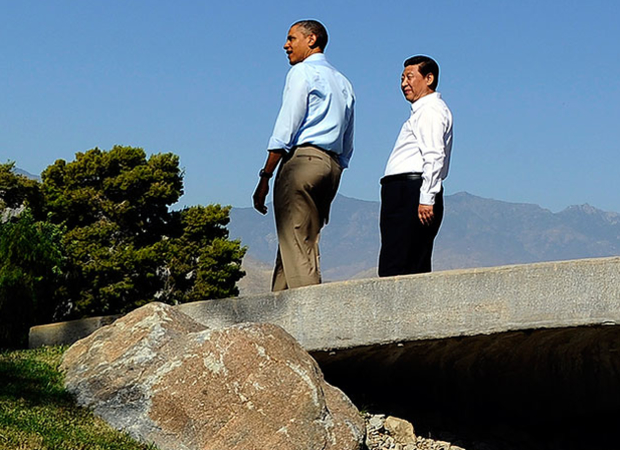
Share and Be Nice
from Two Way StreetOn his last state visit to the U.S. in 2013, President Xi spoke of a “new type of great power relationship.” The subject has been widely discussed in China since then. President Obama should outline his own vision by drawing a distinction between Putin’s Russia, which has replaced the rule of law with the rule of force, and today’s China, which does not always abide by the rule of law but respects its treaty obligations. Russian aggression needs to be firmly resisted; by contrast China needs to be encouraged—by offering a more constructive alternative—to avoid the route of military aggression. This kind of offer may elicit a favorable response. Rivalry between the U.S. and China is inevitable but it needs to be kept within bounds that would preclude the use of military force.
It does not follow that a far-reaching agreement amounting to a strategic partnership between the U.S. and China would be easy to accomplish. The two countries have fundamentally different political systems. While the U.S. is founded on the principle of individual freedom, China has no significant tradition of such freedom. It has had a hierarchical structure since time immemorial and it has been an empire throughout most of its history. In recent years the U.S. has led the world in the innovative development of social media, while China has led the world in finding means to control it. Since the end of the cold war, China has been much more successful than Russia in creating a successful hierarchical system.
This is best seen by looking at the way information is distributed. Since the rise of social media, information increasingly travels along horizontal lines, but China is different: information is distributed vertically. Within the party–state apparatus, the closer one is to the top, the better one is informed and the more latitude one enjoys in expressing an opinion. This means that the party–state apparatus offers not only an opportunity for personal enrichment but also a semblance of individual freedom. No wonder that the apparatus has been able to attract much of China’s best talent. The degree of latitude it allows is, however, strictly circumscribed by red lines. People have to walk within a grid; those who transgress the red lines may fall into the hands of the security apparatus and disappear without a trace.
The stranglehold of the security apparatus was gradually diminishing but recently there has been an ominous reversal: under the leadership of President Xi the informal rules defining the rights and status of NGOs, for instance, are now in the process of being significantly tightened.*
Comparing President Xi’s “Chinese dream” with the American dream highlights the difference between the two political and social systems. Xi extols China’s success in “rejuvenating the nation” by harnessing the talents and energies of its people in service of the state. By contrast, the American dream extols the success of the rugged individual who achieves upward social mobility and material prosperity by overcoming obstacles posed by social conventions or prejudices or authorities abusing their power, or sheer bad luck. The U.S. would like China to adopt its values but the Chinese leadership considers them subversive.
In this respect China has more in common with Russia than with the U.S. Both Russia and China consider themselves victims of America’s aspiration to world domination. From the U.S. point of view, there is much to disapprove of in China’s behavior. There is no independent judiciary and multinational companies are often mistreated and replaced by domestic favorites. And there are conflicts with the U.S. and other nations in the South China Sea and over cyberwarfare and human rights. These are not matters on which cooperation will be easy to achieve.
Fully recognizing these difficulties, the U.S. government should nevertheless make a bona fide attempt at forging a strategic partnership with China. This would involve identifying areas of common interest as well as areas of rivalry. The former would invite cooperation, the latter tit-for-tat bargaining. The U.S. needs to develop a two-pronged strategy that offers incentives for cooperation and deterrents that render tit-for-tat bargaining less attractive.
The areas for cooperation may prove to be wider than is obvious at first sight. Cooperating with China in making President Xi’s financial reforms successful is definitely in the common interest. Success would fulfill the aspirations of the ever-increasing Chinese middle class. It may also allow Xi to relax some of the restrictions he has recently introduced and that would, in turn, increase the probability that his reforms will succeed and improve global financial stability. The weak point of his current approach is that both implementing and monitoring the reform process are in the same hands. Opening up the process to criticism by the media and civil society would greatly improve the efficacy of his reforms. This is particularly true of Xi’s anticorruption campaign. And if China followed this path, it would become increasingly attractive to the U.S. as a strategic partner.
Negotiations between the U.S. and China could not possibly be completed by October 2015, when the board of the IMF is scheduled to consider the composition of the SDR basket. Realistically it would take until President Xi’s state visit to Washington in September to complete the preparations. But there is much to be gained by extending the SDR deadline to 2016. China will then host the meeting of the G20, and 2016 will also be the last year of the Obama administration. The prospect of a strategic partnership between the U.S. and China would mobilize all political forces in favor of international cooperation on both sides.
If a bona fide attempt fails, the U.S. would then be fully justified in developing a strong enough partnership with China’s neighbors that a Chinese–Russian alliance would not dare to challenge it by military force. That would be clearly inferior to a strategic partnership between the U.S. and China. A partnership with China’s neighbors would return us to a cold war, but that would still be preferable to a third world war.
The Trans-Pacific and Trans-Atlantic Partnerships, which are currently being negotiated, could offer an excellent opportunity for a two-pronged strategy but the current approach is all wrong. At present China is excluded; indeed the partnerships are conceived as an anti-Chinese alliance under U.S. leadership. The president has asked Congress to give him and his successor authority for up to six years to negotiate trade agreements under fast-track rules that would deprive Congress of its right to introduce amendments. The bill has passed the Senate and at this writing is before the House. If the House approves, President Xi may be presented with an apparent threat on his visit in September. This is an appropriate response to China’s aggressive behavior in the South China Sea and elsewhere, but it leaves little room for an alternative approach. It would, as a result, be difficult for President Obama to make a bona fide offer of strategic partnership.
It is to be hoped that the House will not authorize putting the bill on a fast track. Instead of railroading the bill through Congress, it ought to be taken off the fast track. In that case, Congress would have plenty of time to correct the fundamental flaws in the proposed treaties that make them unacceptable as they are currently written. And that would also allow President Obama to make President Xi a genuine offer of a strategic partnership with China when he visits Washington in September.
- See Edward Wong, “Chinese Security Laws Elevate the Party and Stifle Dissent. Mao Would Approve,” The New York Times, May 30, 2015.↩




